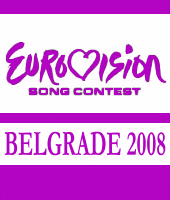The European Broadcasting Union (EBU) was formed on 12th February 1950 by 23 broadcasting organisations from Europe and the Mediterranean at a conference in Devon, United Kingdom. It was on 6th June 1954 that Montreux became the venue for the first transmission by the EBU’s Eurovision Network of the Narcissus Festival and its flower-bedecked procession floats. The first Eurovision viewers eagerly watched on 4 million television sets in homes, bars, and shop windows in Germany, Belgium, France, the United Kingdom, Italy, the Netherlands, and Switzerland.
In 1955, the EBU came up with the idea of an international song contest whereby countries, represeted by their respective broadcasters, would participate in one television show, to be transmitted simultaneously in all represented nations. This was conceived during a meeting in Monaco in 1955 by Marcel BEZENÇON, a Frenchman working for the EBU. The competition was based upon the Italian Festival di Sanremo, held for the first time in 1951, and was also seen as a technological experiment in live television: in those days, it was a very ambitious project to join many countries together in a wide-area international network. Satellite television did not exist yet at that time, and the Eurovision Network comprised a terrestrial microwave network. Le Grand-Prix Eurovision de la Chanson Européenne was born!
Without interrpution, the Eurovision Song Contest has been broadcast every year since 1956, which makes it one of the longest-running television programmes in the world. The competition has been broadcast throughout Europe, but also in Australia, Canada, Egypt, Hong Kong, India, Jordan, Korea, New Zealand and the United States, even though these countries do not participate.from www.eurovision.tv
